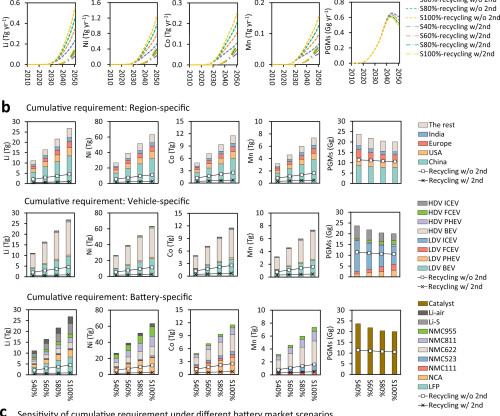Cornell study examines trade-off between critical metals requirement and transportation decarbonization
Green Car Congress
APRIL 17, 2023
Decarbonization targets for road transportation should be coupled with electric vehicle deployment, the timing of carbon peak and neutrality, and accurate emission budgets. Zhang et al. Monotonic growth in global demand for critical metals to 2050 is the most prevalent trend. The research was supported by the National Science Foundation.





















Let's personalize your content